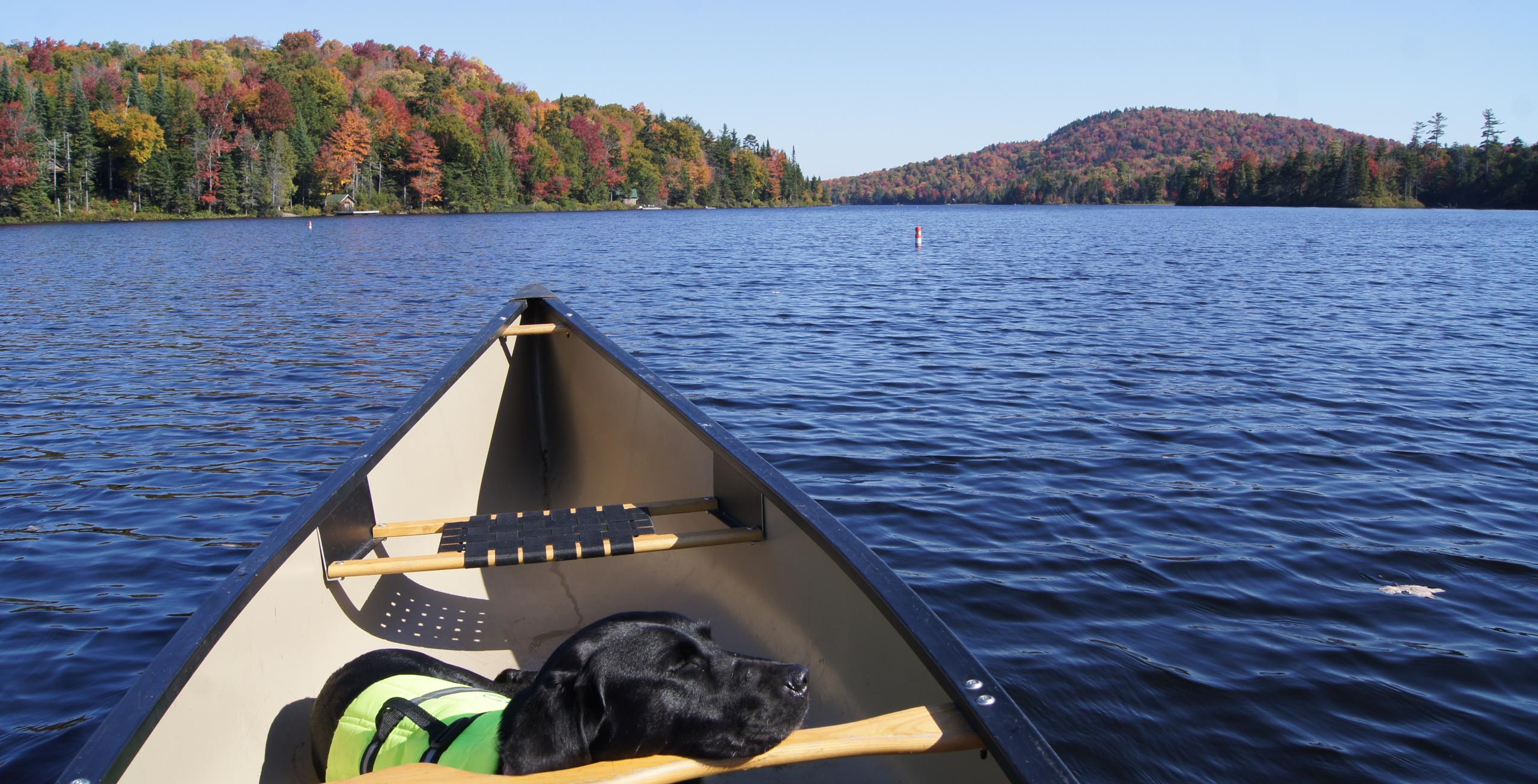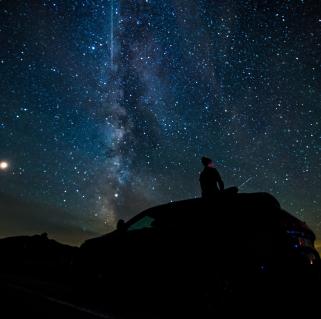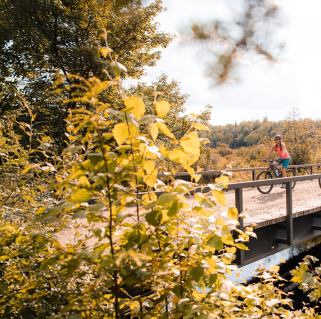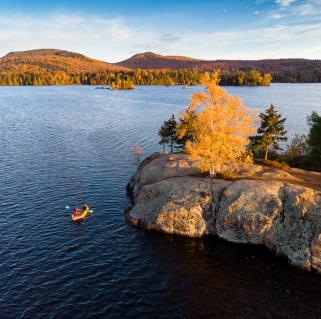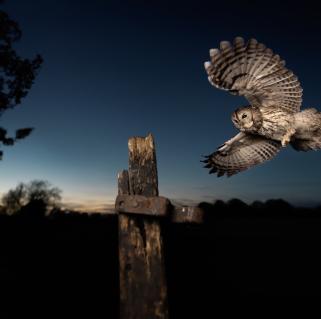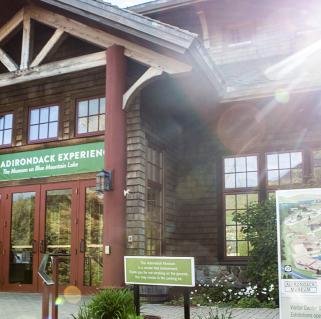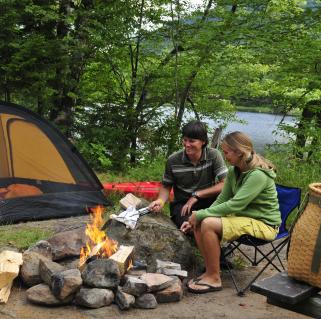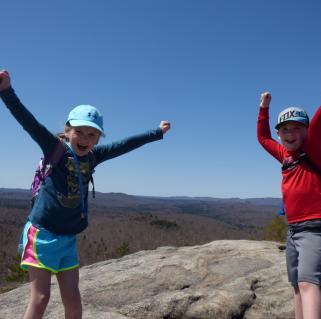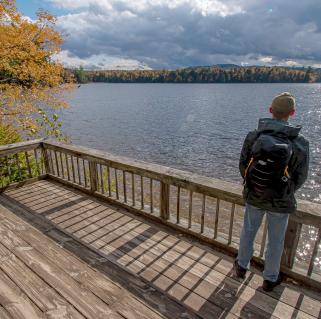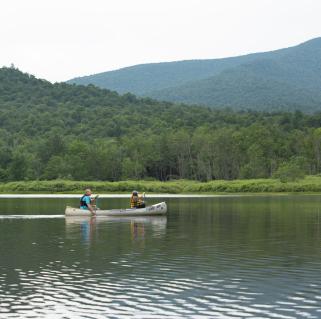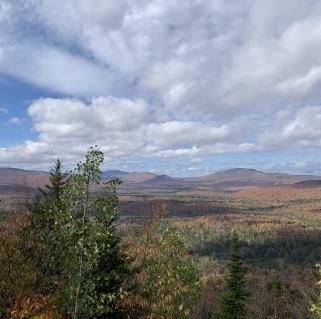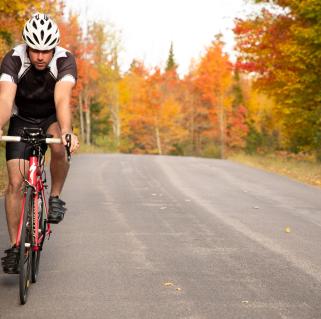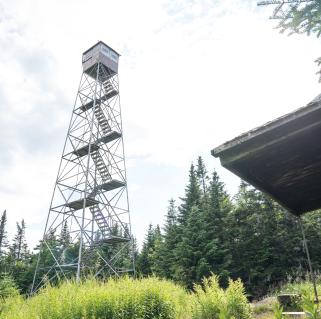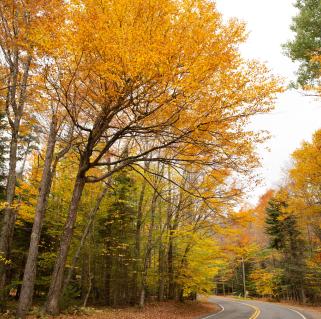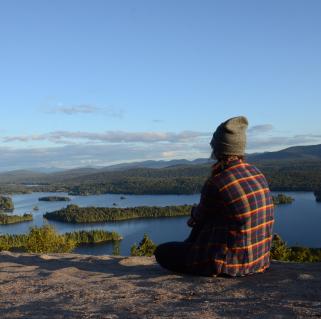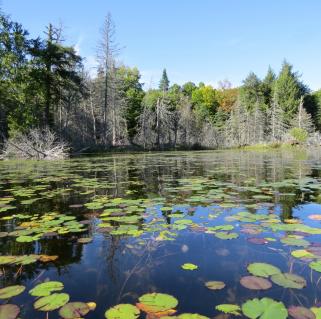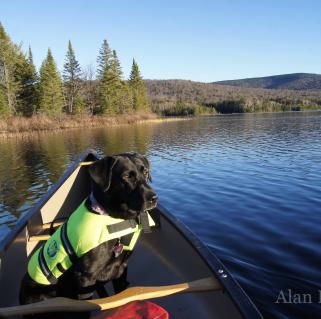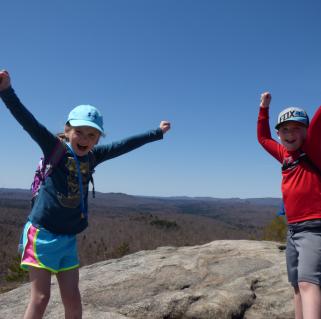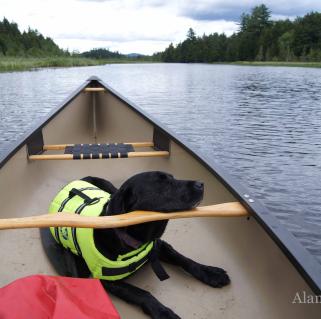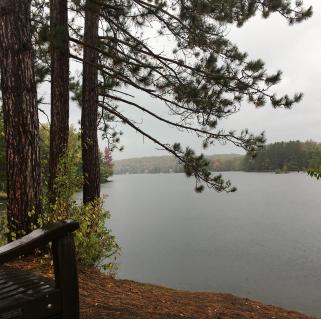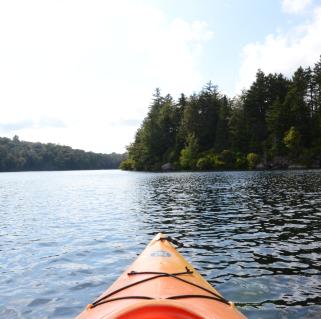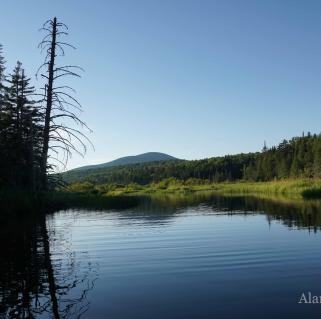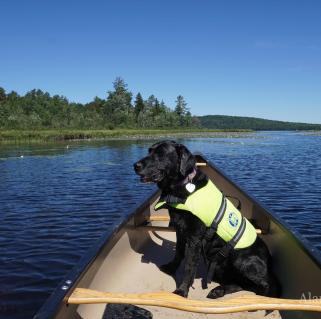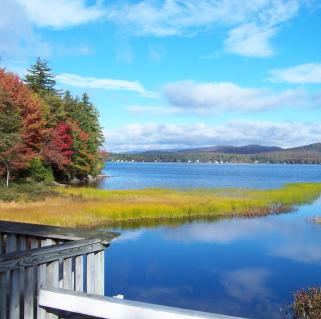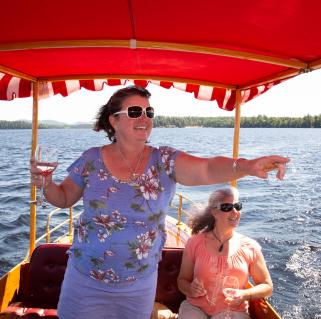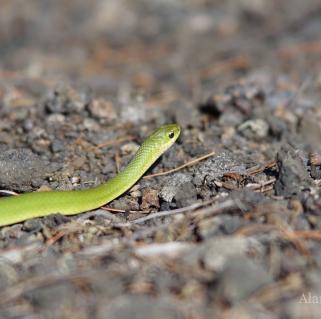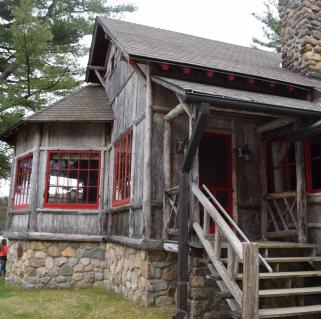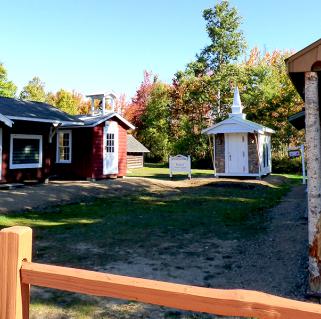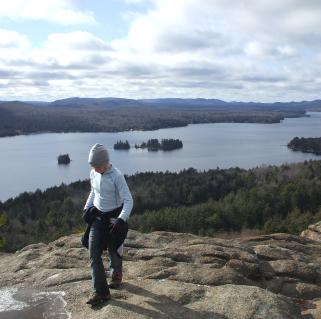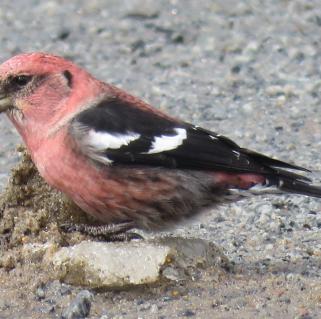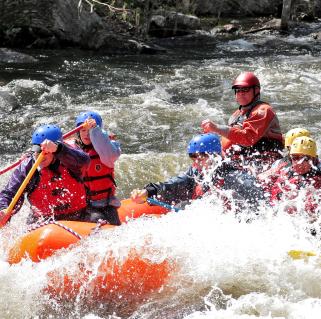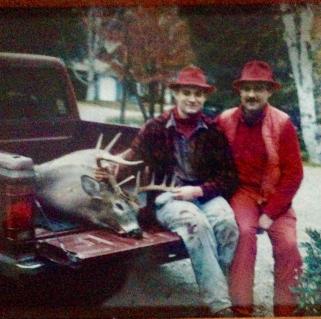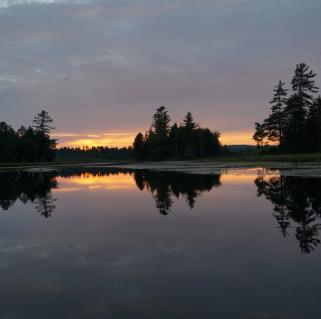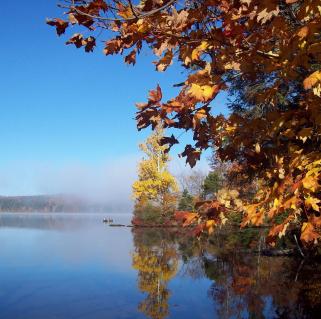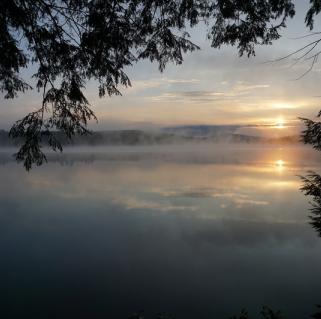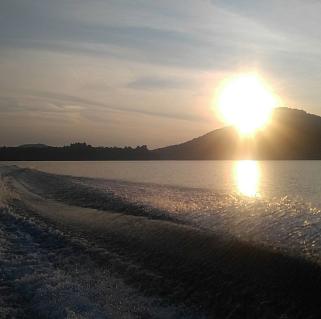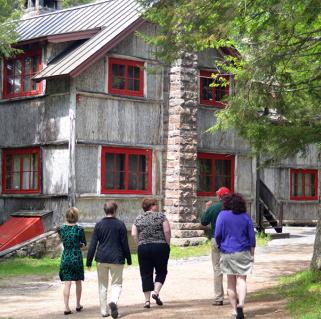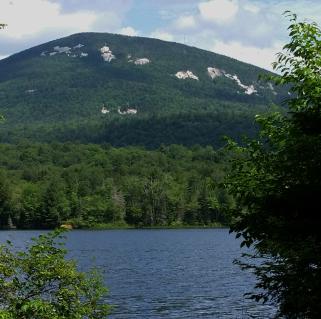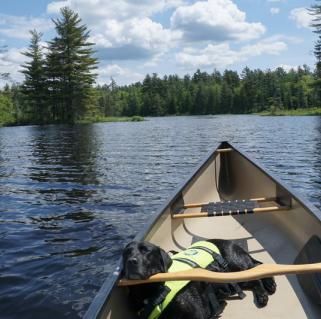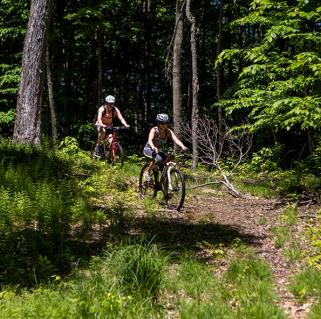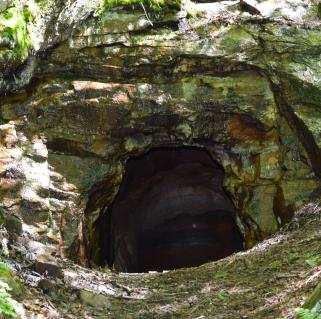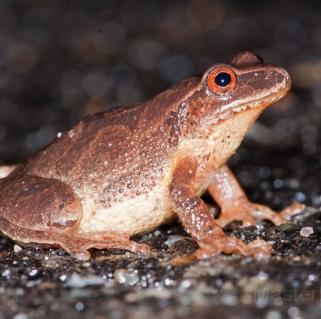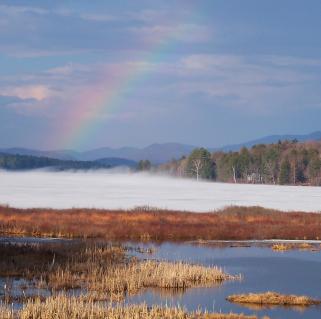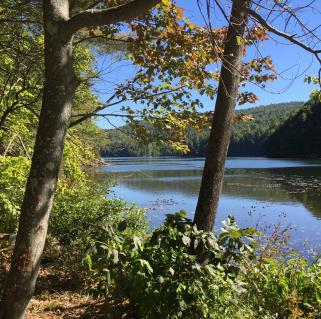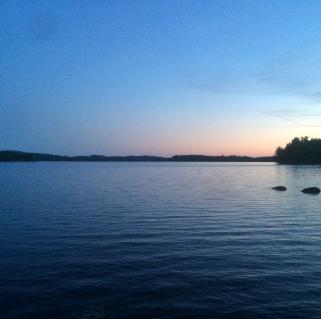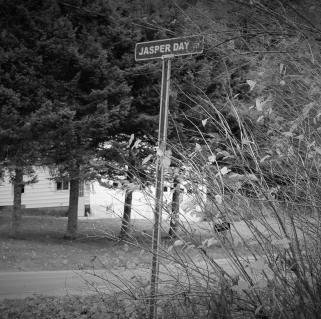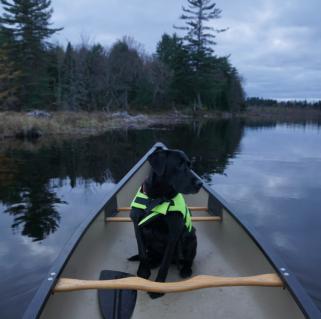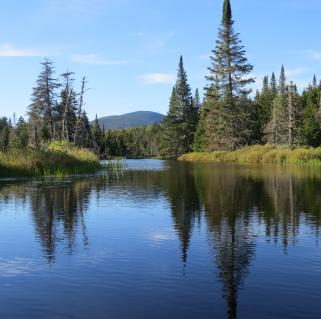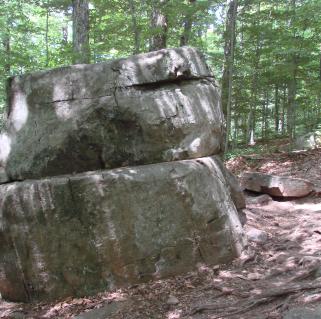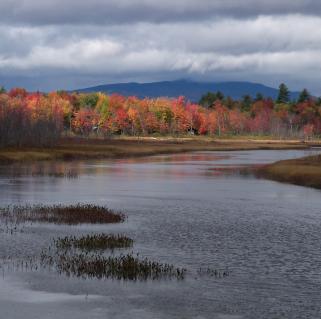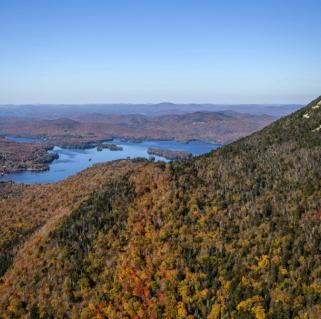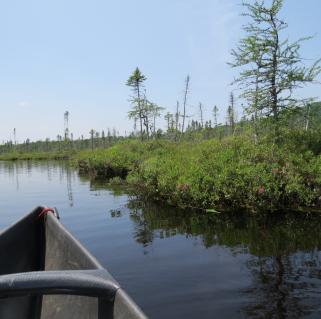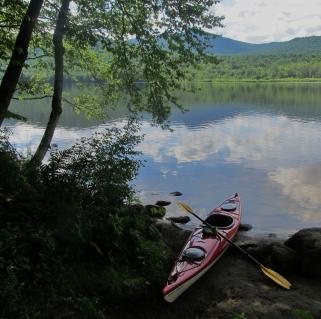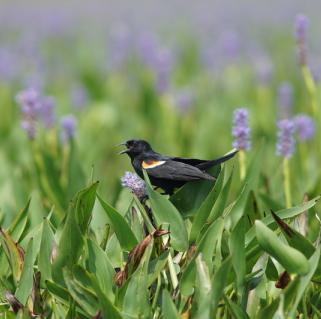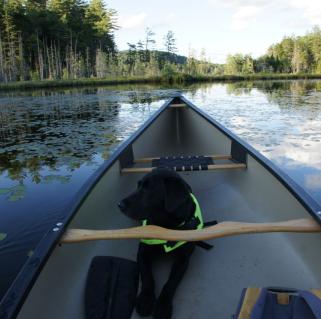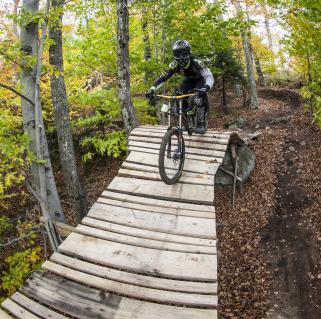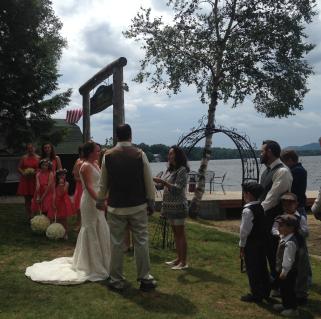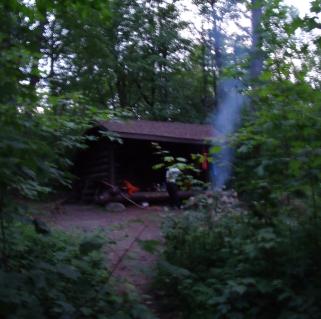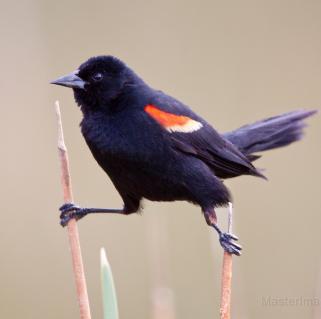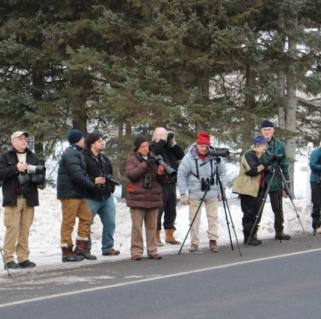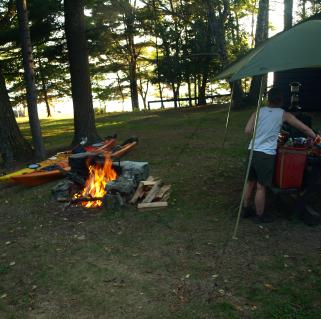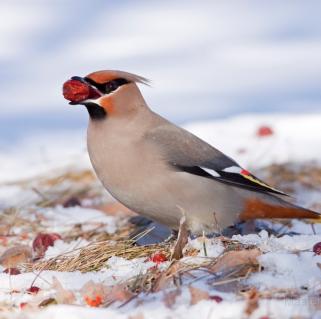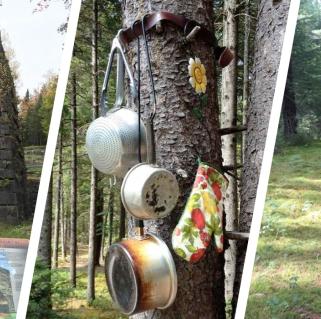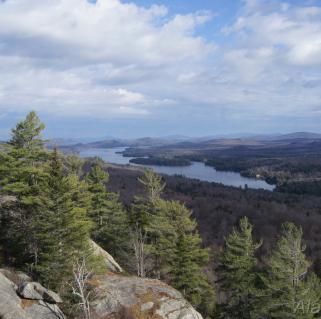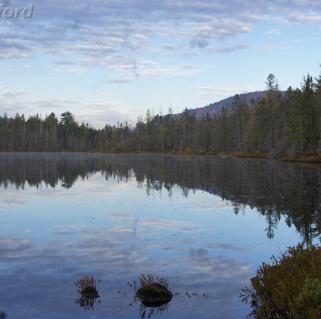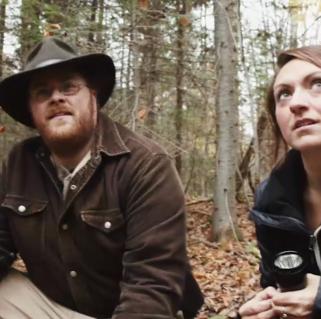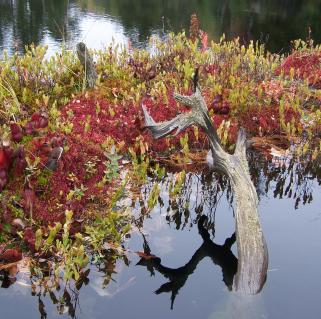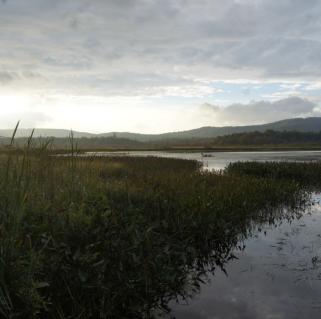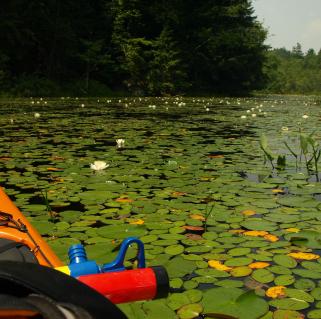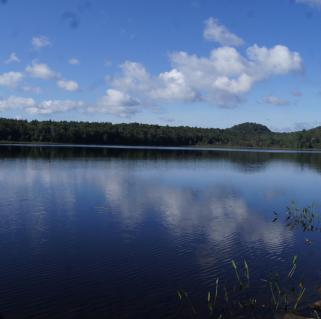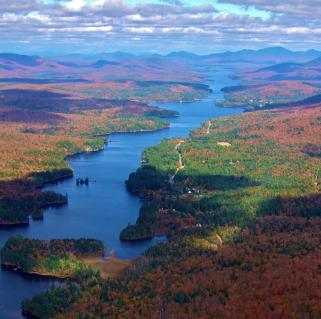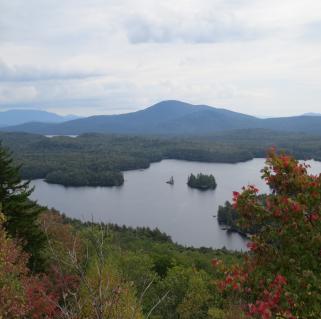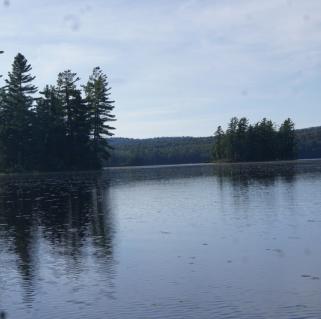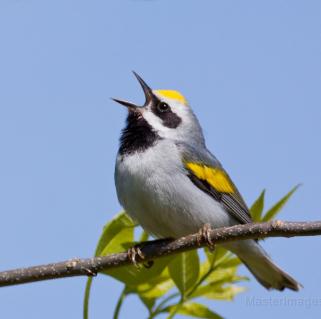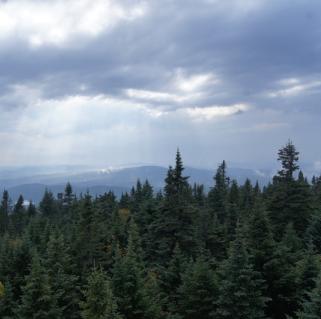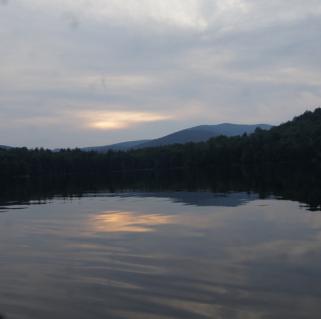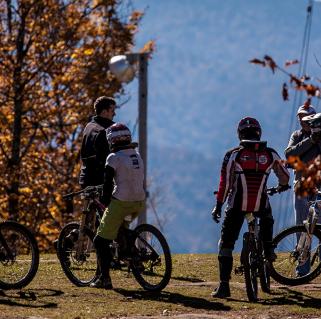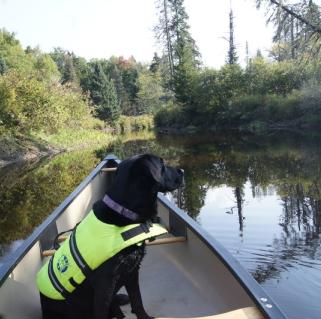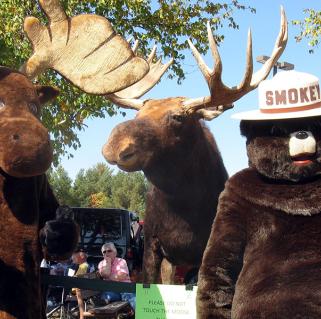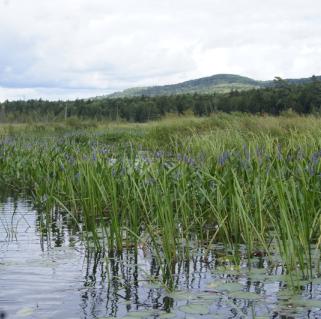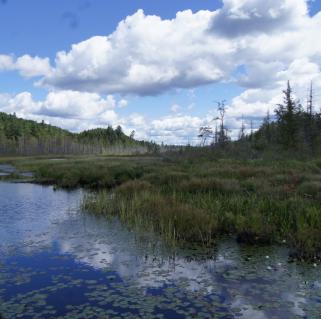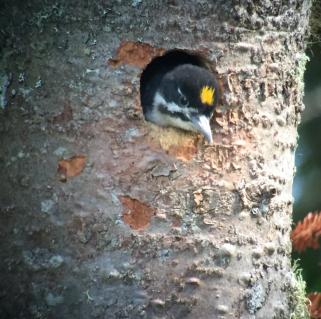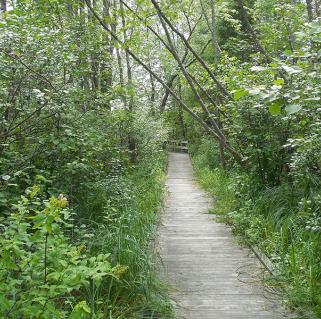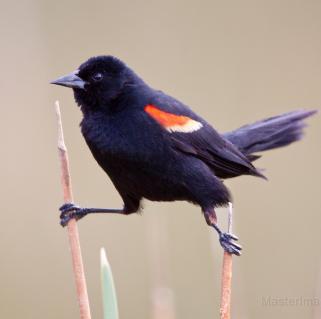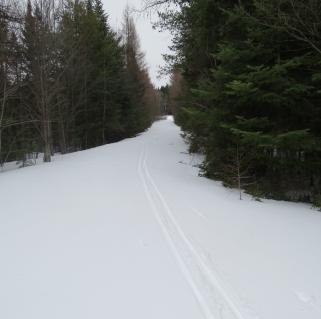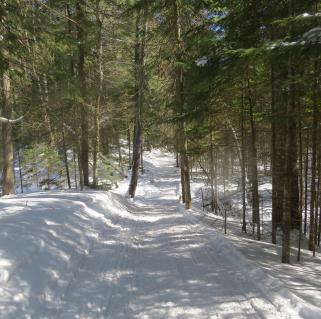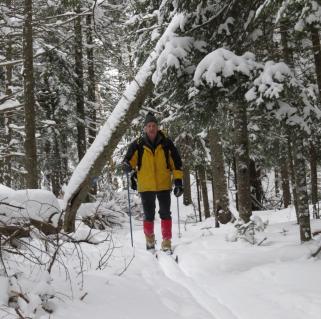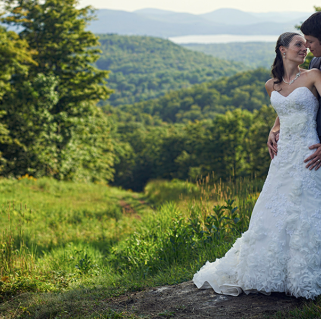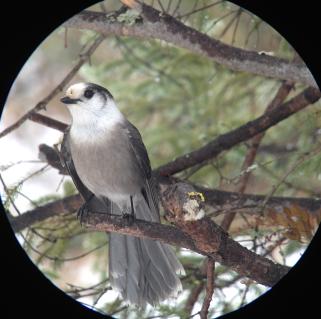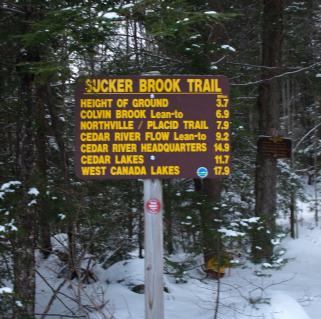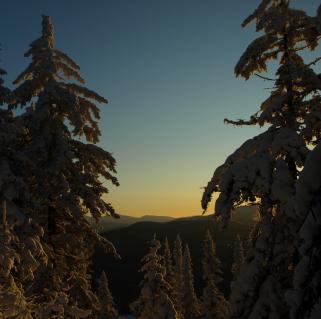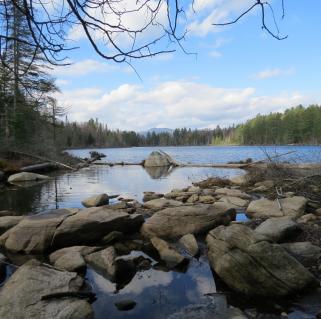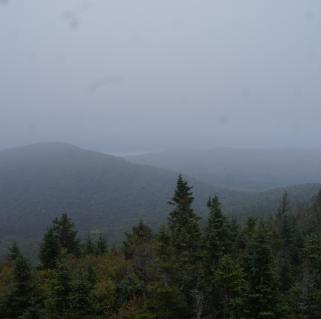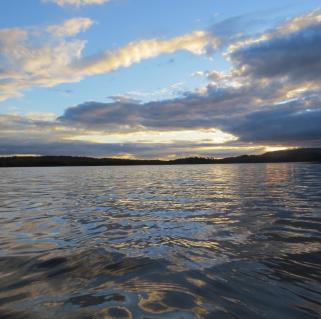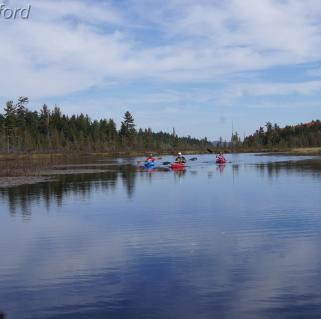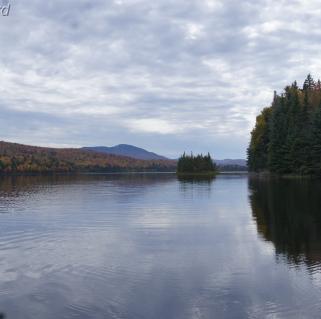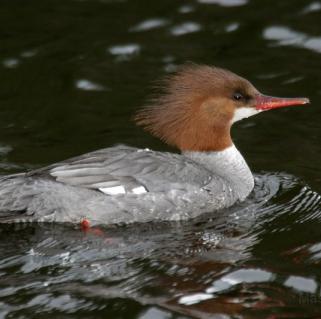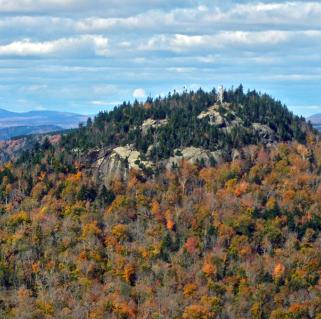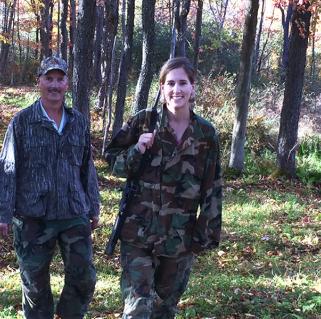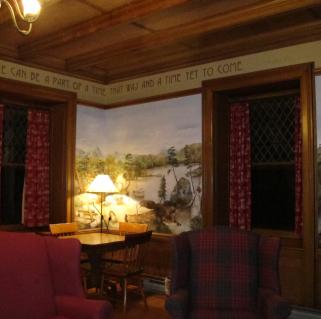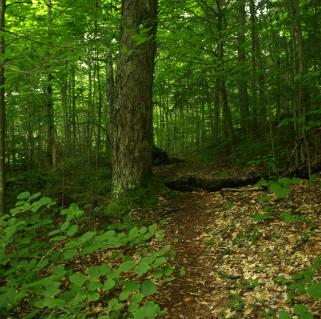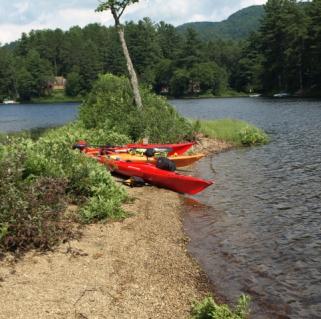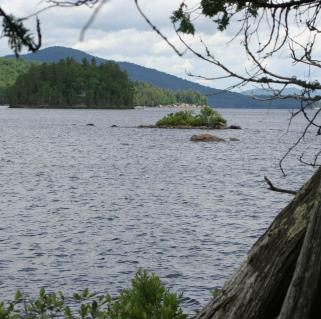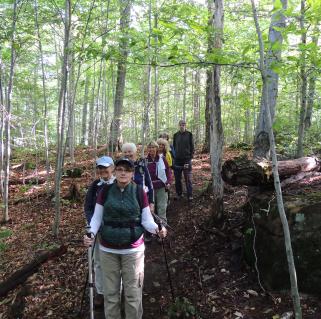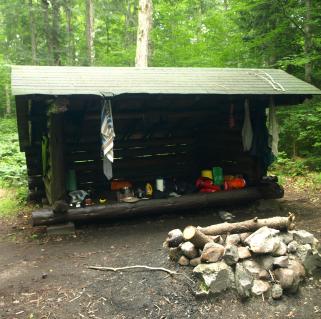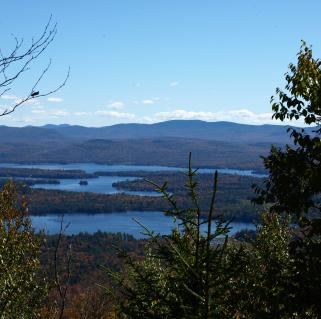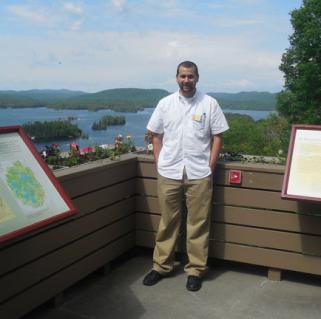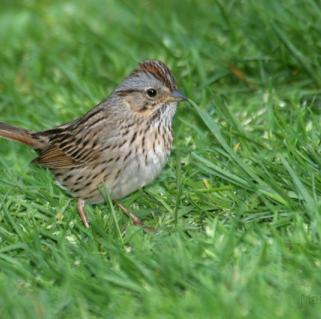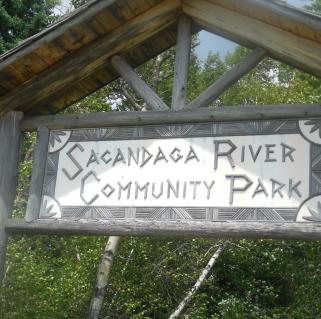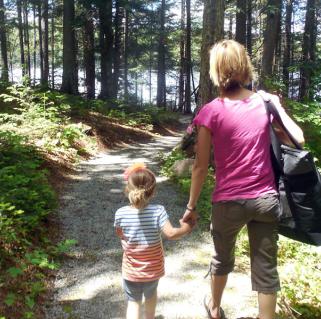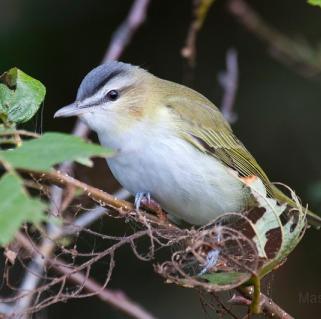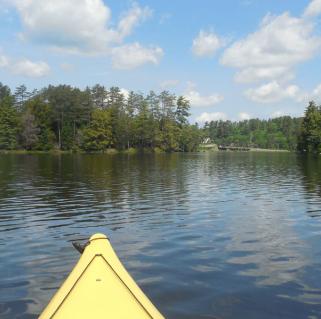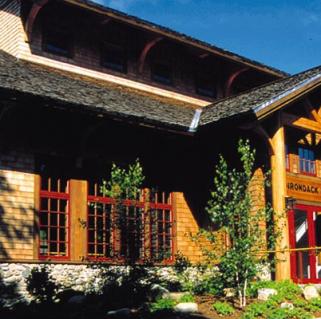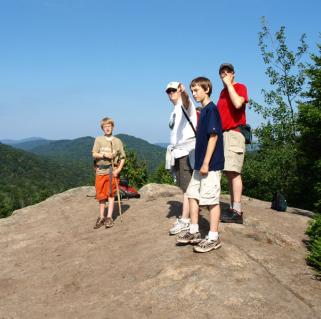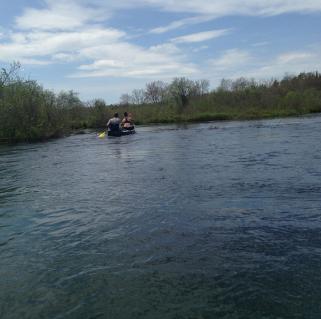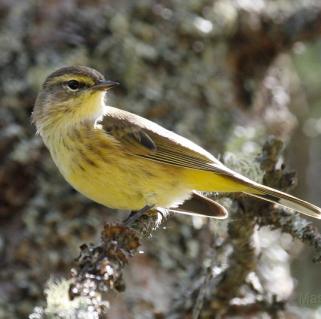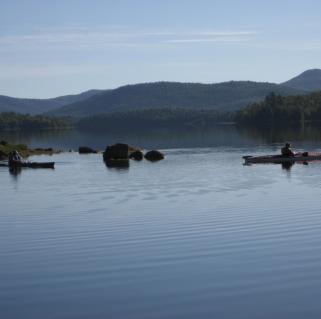A Well-known Lake
Wren and I had been camping near Stillwater Reservoir and we drove south through Big Moose to Twitchell Lake – right near the Herkimer-Hamilton County line, for a paddle. I chatted with a man who carried a large board from his car and placed it in his canoe. "I got it all measured last time," he said. "Now I've got to go to my camp and put it in." With that he and his dog were off on the flat waters toward his camp.
There are many camps along Twitchell Lake – in fact, almost the entire shoreline is private. State land only borders the water at the boat launch and in one other corner of the lake. I don't usually paddle lakes with such a small amount of state land, but the camps are strung out – particularly the farther northeast you paddle - and so there is plenty of natural scenery to enjoy. And many people know of Twitchell because it is where the famous ecologist, conservationist, and wilderness writer Anne LaBastille lived year after year even after winter had chased the summer residents away. Her books about being a woman in the Adirondack wilderness are well known, and I was interested in paddling Twitchell partly because it was her one time abode.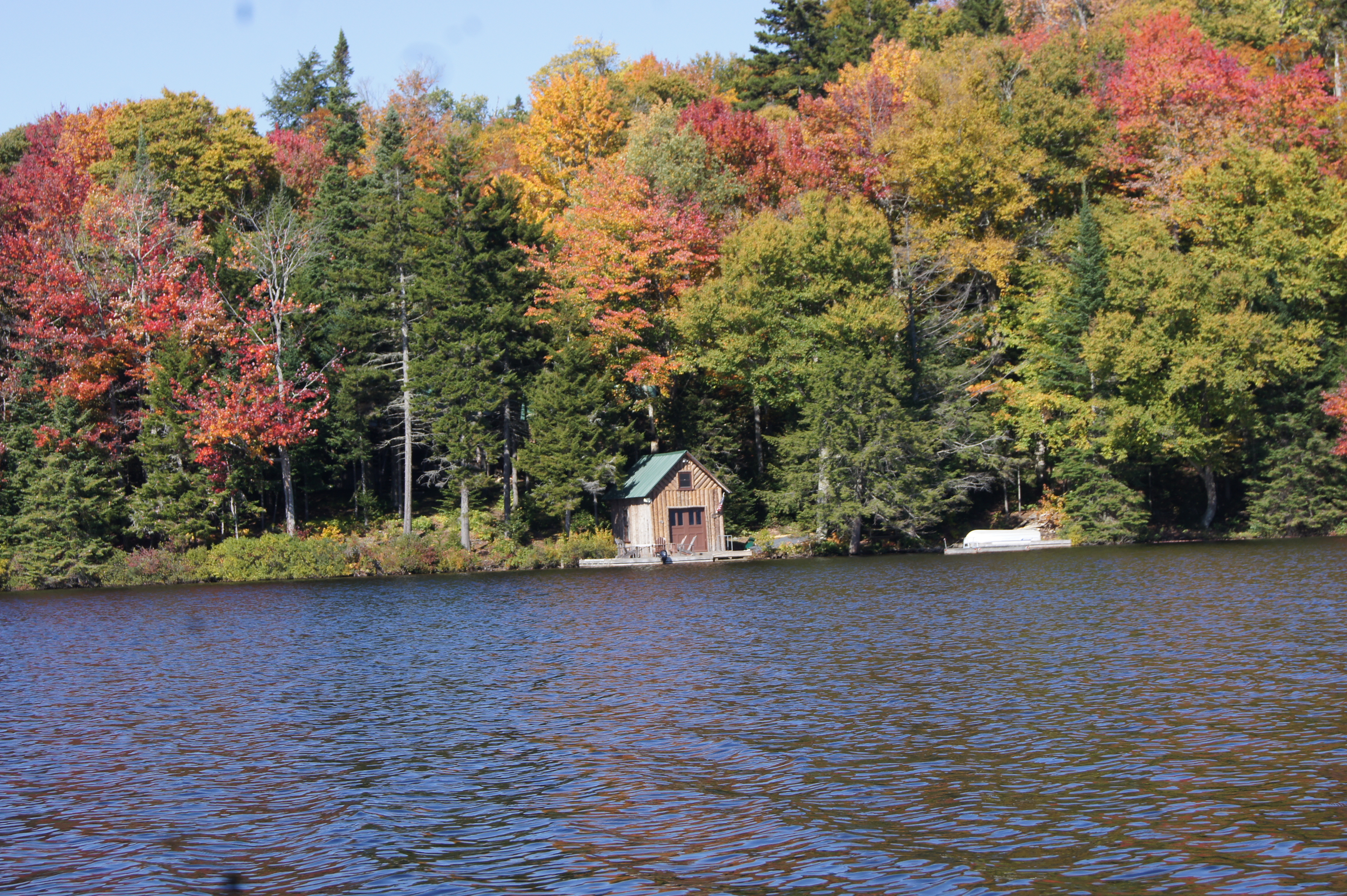
Watching Common Loons and Other Birds
As I was preparing our gear to leave, I listened to a flock of fall birds near the boat launch. Yellow-rumped Warblers and Black-capped Chickadees twittered in the trees, and a Blue-headed Vireo sang nearby. Twitchell is a narrow lake which runs from the southwest to the northeast, and Wren and I set out heading northeast into a slight breeze which graced the mirror-like surface with lines of advancing ripples. We passed the string of camps which were largely quiet, save for a distant sound of hammering and power tools I assumed came from the man now fixing his deck. The constant barking of a dog caught the attention of Wren, sounding a bit like it had been put outside without any other diversion to pass the time.
All around us the leaves were bright with fall; sugar maples, red maples, ash, and other hardwoods festooned the shoreline. Such a narrow lake is great for viewing the leaves on each side of you, and I paused for photos here and there. I watched a Common Loon in the middle of the lake as a Belted Kingfisher cruised overhead chattering. Further along, I hugged the shoreline near Anne LaBastille's old place, listening for songbirds on the shore, and I watched as an adult Common Loon fed a nearly grown chick. The breeze was then growing the small ripples to tiny lapping waves at times and we paddled to the far end of the lake before turning to ride the breeze back.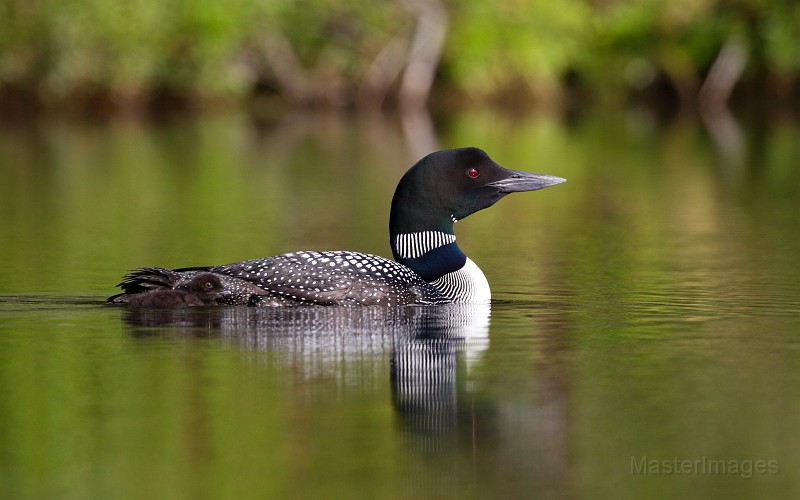
Playing in the Breeze
Breezes while paddling can be a mixed bag. On the one hand they can either help or hinder your progress, on the other hand they can cool you as you paddle. As such I enjoy a soft breeze in my face when I paddle. The late morning sun was growing warm as we went, and the breeze felt good. But sometimes a light breeze at your back doesn't feel like much of anything since you are moving with the wind. And so, as we turned, I felt the air become instantly warmer. Whenever the breeze picked up or I slowed down the breeze cooled me. But otherwise I felt like we were in the doldrums on some warm sea, even though I knew the breeze would theoretically help carry us at least a little toward the put-in. For her part, Wren became warm as well and started to pant softly as she dozed in the boat.
In this way we completed our paddle back to the put-in and Wren was excited to get out of the boat and take a swim. I, too, rinsed my sweaty face and loaded our gear back up. We snacked and drove off to our next adventure. After all, the day was still young and with the leaves in peak form we had other places to explore.
If you're visiting the area you'll want to check out our lodging and restaurant options to complete your own post-hike ritual! Want to read more about Adirondack authors - many of our local stores carry great regional reads. Planning your next vacation? Check out our extensive hiking and birding options - the Adirondacks are waiting!

